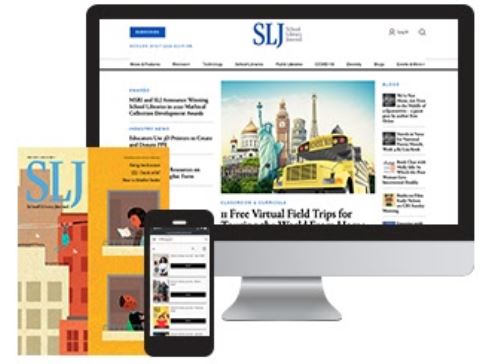2018 School Spending Survey Report
Abraham Lincoln and Frederick Douglass
The Story Behind an American Friendship
Abraham Lincoln and Frederick Douglass: The Story Behind an American Friendship. 114p. photos. reprods. bibliog. index. notes. Clarion. June 2012. Tr $18.99. ISBN 978-0-547-38562-4.
COPY ISBN
 Gr 5–10—Freedman tells the story of a friendship between two men who shared many characteristics. Lincoln and Douglass were both self-educated, born into poverty, and, through relentless effort and hard work, reached great success. Both men fought for freedom and equality for all Americans, both black and white, as promised in the Declaration of Independence. Divided into 10 chapters, the book offers biographical details for each man, an overview of the Civil War, Lincoln's changing attitude toward African Americans, Douglass's endeavors to create black regiments within the Union army, and descriptions of the men's face-to-face meetings. Captioned black-and-white photographs and reproductions are found on almost every page. An appendix, a selected bibliography, notes, and a list of historic sites complete the volume. Douglass's quotes are largely taken from his three autobiographies, and the Lincoln quotes, while taken from secondary sources, are from definitive and modern standard sources. A first-rate volume for classroom study and general reading.—Patricia Ann Owens, Illinois Eastern Community Colleges
Gr 5–10—Freedman tells the story of a friendship between two men who shared many characteristics. Lincoln and Douglass were both self-educated, born into poverty, and, through relentless effort and hard work, reached great success. Both men fought for freedom and equality for all Americans, both black and white, as promised in the Declaration of Independence. Divided into 10 chapters, the book offers biographical details for each man, an overview of the Civil War, Lincoln's changing attitude toward African Americans, Douglass's endeavors to create black regiments within the Union army, and descriptions of the men's face-to-face meetings. Captioned black-and-white photographs and reproductions are found on almost every page. An appendix, a selected bibliography, notes, and a list of historic sites complete the volume. Douglass's quotes are largely taken from his three autobiographies, and the Lincoln quotes, while taken from secondary sources, are from definitive and modern standard sources. A first-rate volume for classroom study and general reading.—Patricia Ann Owens, Illinois Eastern Community CollegesDespite meeting only three times, Lincoln and Douglass formed a lasting friendship based on mutual admiration, respect, and trust. Through this friendship--an extremely effective structure--Freedman surveys the tenor of the times regarding slavery, abolition, the Civil War, and emancipation. Included are period illustrations and a generous assortment of the subjects' own words. Notes. Bib., ind.
"Heads turned when Frederick Douglass walked into the White House on the morning of August 10, 1863." Despite meeting only three times, Lincoln and Douglass formed a lasting friendship based on mutual admiration, respect, and trust. Freedman opens his narrative with Douglass waiting to meet Lincoln for the first time, then flashes back to cover the early lives of first Douglass and then Lincoln (noting several similar circumstances that shaped each man) before resuming with their first and subsequent meetings during the Civil War. It’s an extremely effective structure that allows the reader to survey the tenor of the times regarding slavery, abolition, the Civil War, and emancipation -- and to survey it through the unique friendship of two of the greatest figures of the era. True to form, Freedman relies heavily on period illustrations and primary and secondary sources, breathing life into both men through a generous assortment of their own words. Many readers may be familiar with Lincoln (especially if they have already read Freedman’s Lincoln: A Photobiography) but perhaps less so with Douglass -- a recent biography for slightly younger readers is David Adler’s Frederick
ALREADY A SUBSCRIBER? LOG IN
We are currently offering this content for free. Sign up now to activate your personal profile, where you can save articles for future viewing





Be the first reader to comment.
Comment Policy:
Comment should not be empty !!!